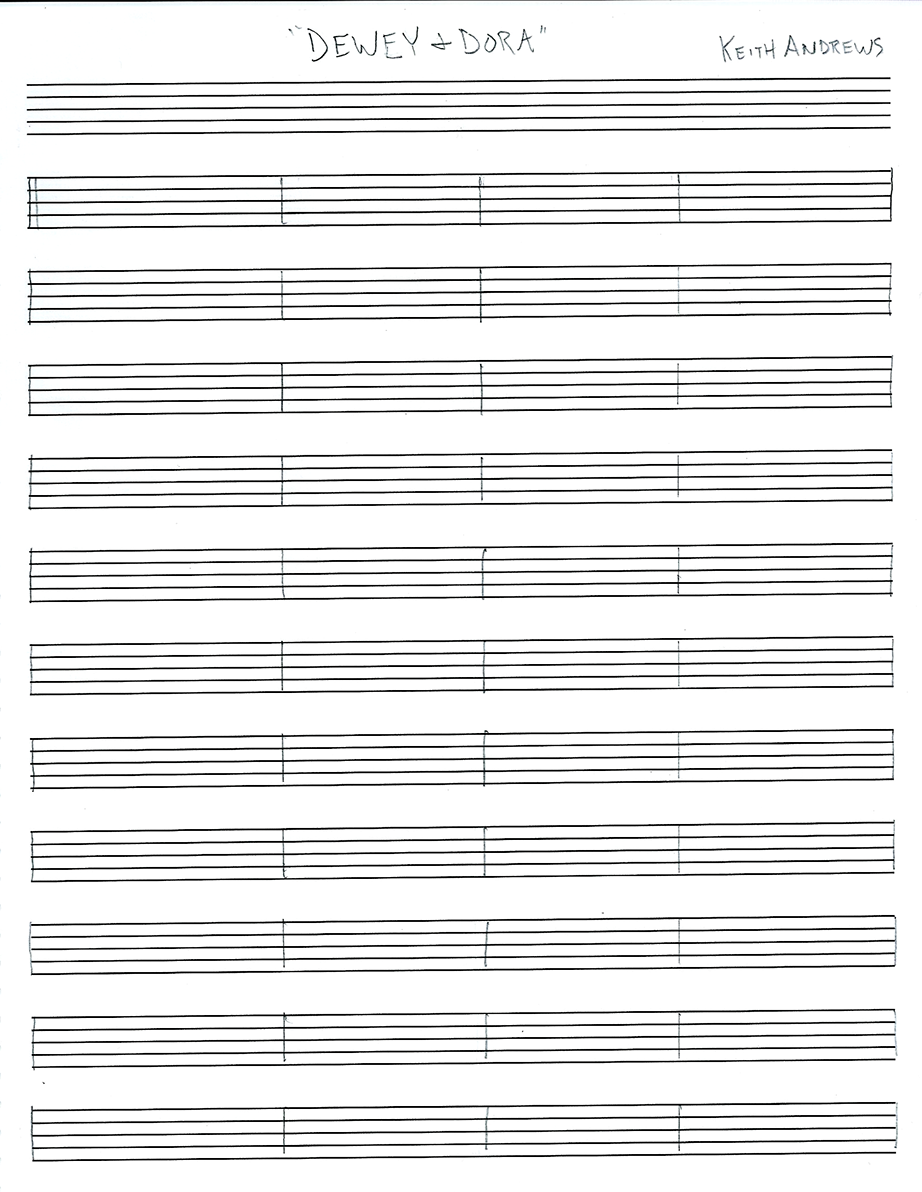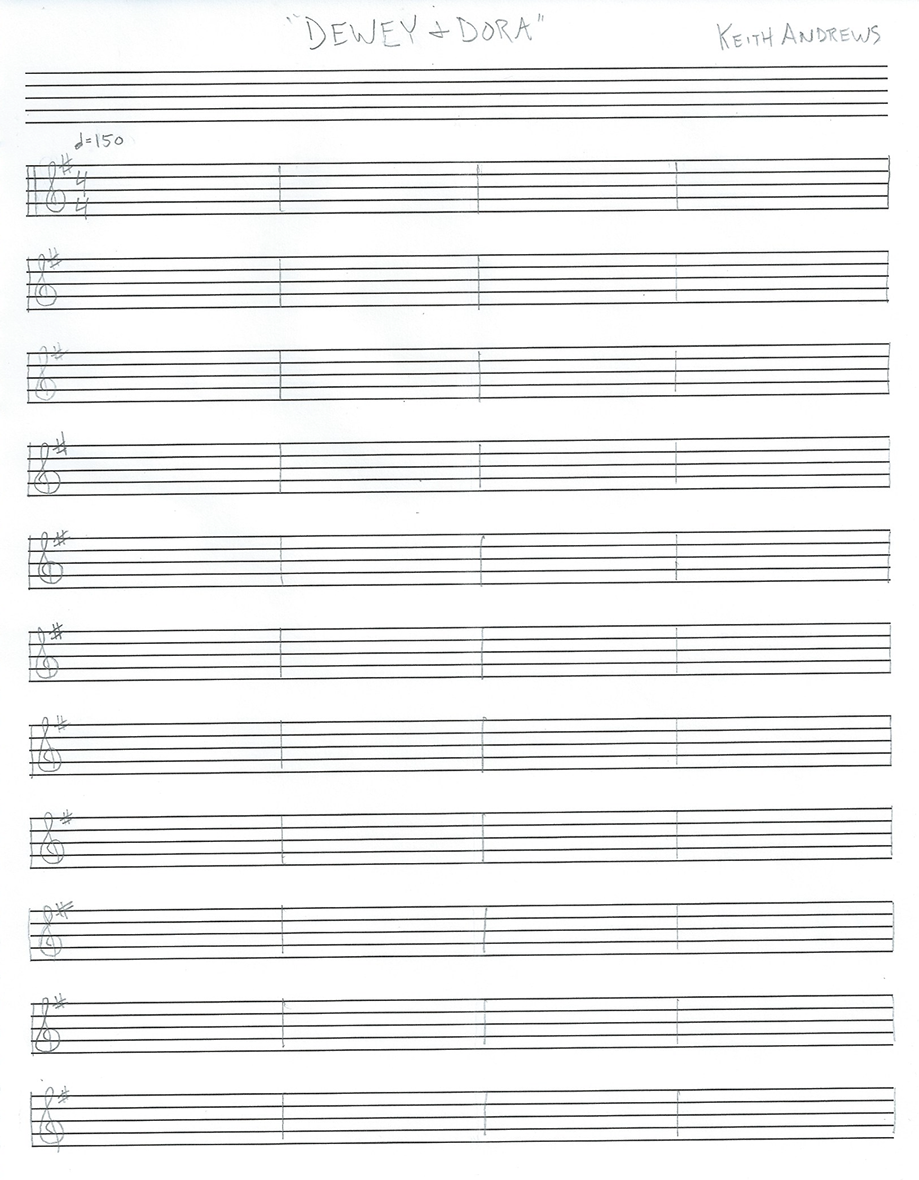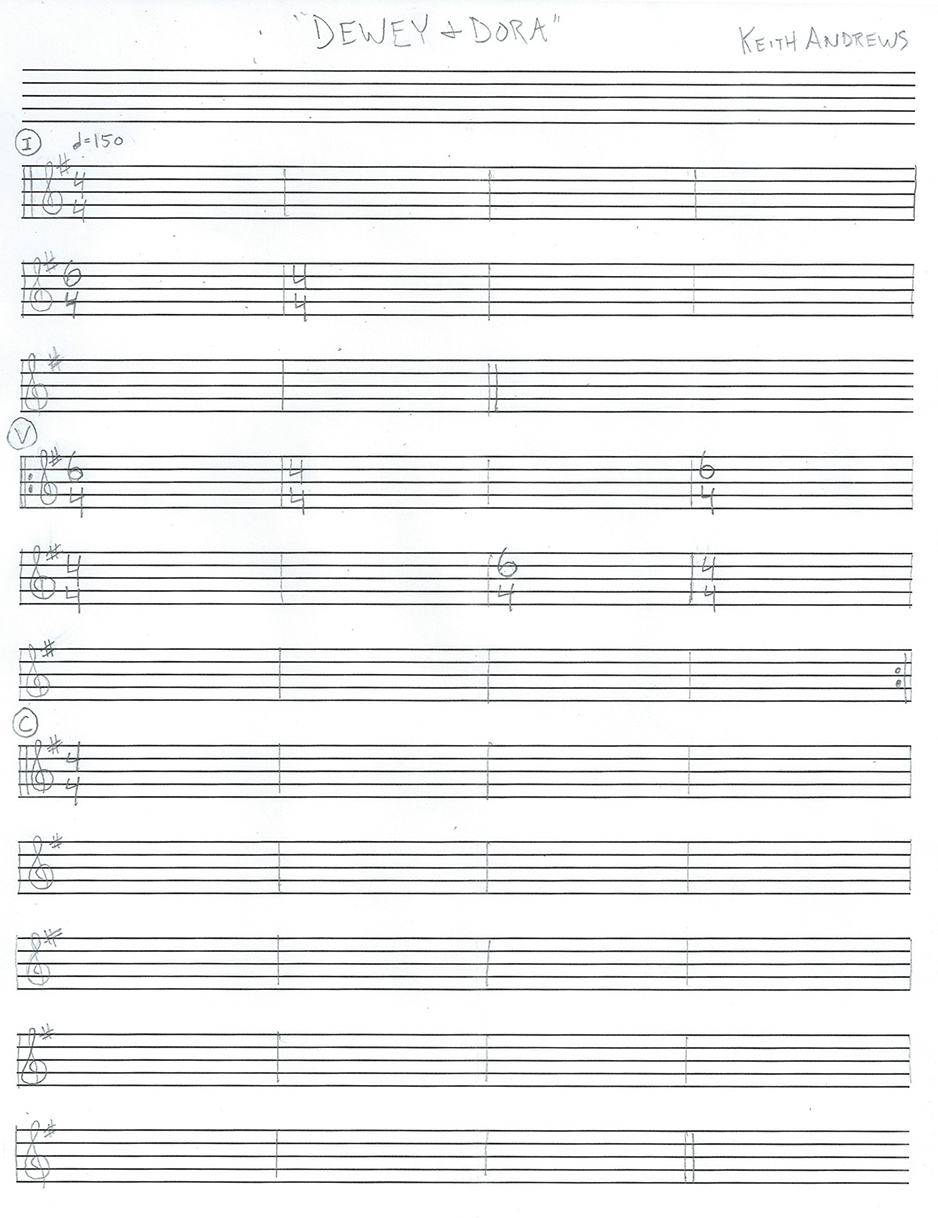
HOSTS- Jeremy Burns, Matthew Scott Phillips
TYPE- Special Topics
DURATION- 90:17
BUMPER MUSIC- "Dewey and Dora Instrumental" (Keith Andrews/Area 47 Music),
"Dewey and Dora" (Keith Andrews)
ANNOUNCER- Mike Cunliffe
It's time to talk about transcription. This is the process of translating what you can hear to something you, or another musician, can read. In part one of this series, we will break down "Dewey and Dora", by Keith Andrews (one of our talented listeners). We will figure out the key, the meter and the tempo and chart it down, in "lead sheet" fashion. We have a great song to work with and a great process to take you through as we put it down on paper!
TRANSCRIPTION- To transcribe a piece of music is to write it down on paper (or design it in a digital notation format) in a fashion that another musician can translate back to music.
LEAD SHEET- This is a stripped down, notated representation of a melody or a song. It shows the key signature, the meter, the tempo (and the changes thereof) within one line of notation. In addition, the chords, melody and lyrics are also given within the same line.
METRONOME- This device clicks out a beat according to what tempo you set it at. It can also be used s a reference when trying to find the tempo of a piece of music.

BE SURE TO USE A PENCIL. EVERYONE MAKES MISTAKES!
-Go ahead and notate the title and credit the writer up top. Leave an extra line of notation between the titles and content (if you can afford to do so).
-Separate each line of notation into measures. In this case, were using 4 measures per line. That will also allow breathing room for the chords above and the lyrics below. We've allowed extra space on the left and right measures to allow for key signatures and repeat signs.


-We found the G major chord to be a highly reoccurring one, especially at the beginning and at the end of each stanza.
-We also heard this chord at the end of a IV, V, I progression.
-Granted, the song begins and ends in G major. But that is not always a sure sign of the key we are in. Nevertheless, of other evidence points at the key of G major. So we notate that on each line.
-As we count along with the song, we will pay attention to stressed and unstressed beats.
-We will listen for the feel. Does it feel like a waltz (3/4)? No. Does it feel like a jig (6/8)? Nope. This feels like a pretty common beat.
-We have determined this to be in 4/4 with a few surprises. Check out the graphic below to see where.
-Tempo can be difficult to identify with no frame of reference.
-If you have a METRONOME, you can adjust the beat until it matches, or comes close to, the beat you're listening to.
-I used an app called "Tap The Beat". You can tap the screen on your phone along with the beat and it will give you a tempo (based on the average space between taps). I found the beat to average around 150 bpm.
-Notate this tempo a the top of the score, over the first measure.



-It seems that the best way to do this is to play along with your instrument. It's ideal, but not necessary, to use and instrument that can play chords.
-Even if you play a melody instrument you can still get an idea of the notes involved.
-If you know the key, and it's DIATONIC chords, you can apply your "theory brain" to make educated guesses about the chords involved. But ALWAYS be ready for surprises. It's not the composer's obligation to use all diatonic chords, nor should it be.
-If a measure of 4/4 involves two chords, it's understood that they each occupy two beats...unless indicated otherwise.
-If a measure of 6/4 involves three chords, it's also understood that they each occupy two beats...unless indicated otherwise.
-Now we want to figure out the form on a basic level. We've designated the sections as: "I" for intro, "V" for verse and "C" for chorus.
-We notated these sections by counting out the measures of each section. We have added double bars at the beginning and the ends of each section
-We've also included the time changes to 6/4 on measures 5, 11, 14 and 17.
-We have added double dots on the "verse" section because it repeats it's self.


-Now we want to figure out the form on a basic level. We've designated the sections as: "I" for intro, "V" for verse and "C" for chorus.
-We notated these sections by counting out the measures of each section. We have added double bars at the beginning and the ends of each section
-We've also included the time changes to 6/4 on measures 5, 11, 14 and 17.
-We have added double dots on the "verse" section because it repeats it's self.

-For a full listen of "Dewey and Dora" click here.
-To learn more about Keith's songwriting process, please enjoy this BONUS interview! It was truly a pleasure getting to chat with him!
-To hear more of Keith's music, check him out on Reverb Nation.

